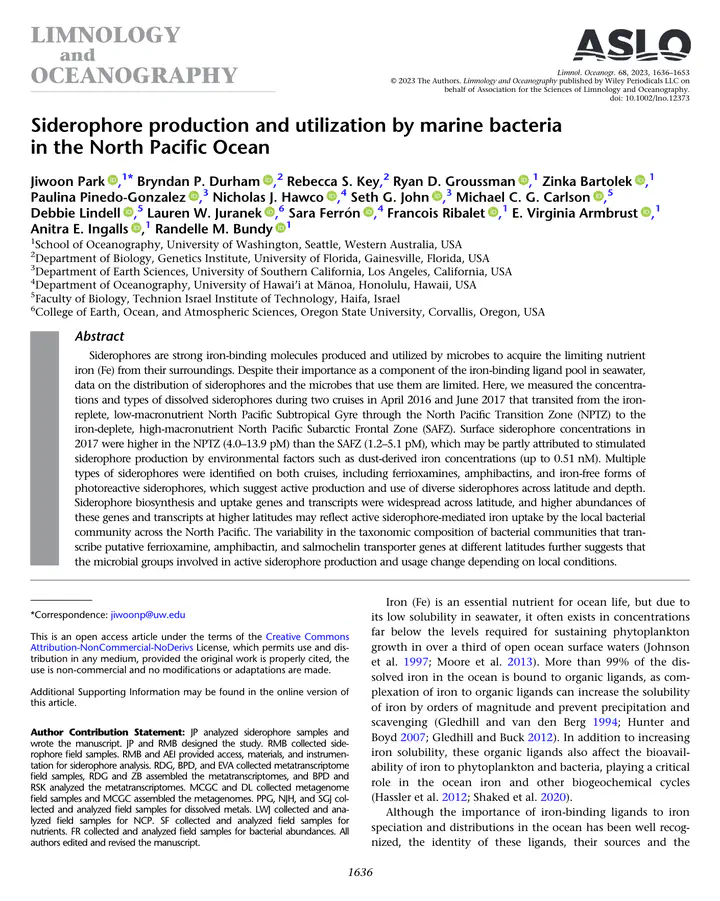
Abstract
Siderophores are strong iron-binding molecules produced and utilized by microbes to acquire the limiting nutrient iron (Fe) from their surroundings. Despite their importance as a component of the iron-binding ligand pool in seawater, data on the distribution of siderophores and the microbes that use them are limited. Here, we measured the concentrations and types of dissolved siderophores during two cruises in April 2016 and June 2017 that transited from the iron-replete, low-macronutrient North Pacific Subtropical Gyre through the North Pacific Transition Zone (NPTZ) to the iron-deplete, high-macronutrient North Pacific Subarctic Frontal Zone (SAFZ). Surface siderophore concentrations in 2017 were higher in the NPTZ (4.0–13.9 pM) than the SAFZ (1.2–5.1 pM), which may be partly attributed to stimulated siderophore production by environmental factors such as dust-derived iron concentrations (up to 0.51 nM). Multiple types of siderophores were identified on both cruises, including ferrioxamines, amphibactins, and iron-free forms of photoreactive siderophores, which suggest active production and use of diverse siderophores across latitude and depth. Siderophore biosynthesis and uptake genes and transcripts were widespread across latitude, and higher abundances of these genes and transcripts at higher latitudes may reflect active siderophore-mediated iron uptake by the local bacterial community across the North Pacific. The variability in the taxonomic composition of bacterial communities that transcribe putative ferrioxamine, amphibactin, and salmochelin transporter genes at different latitudes further suggests that the microbial groups involved in active siderophore production and usage change depending on local conditions.